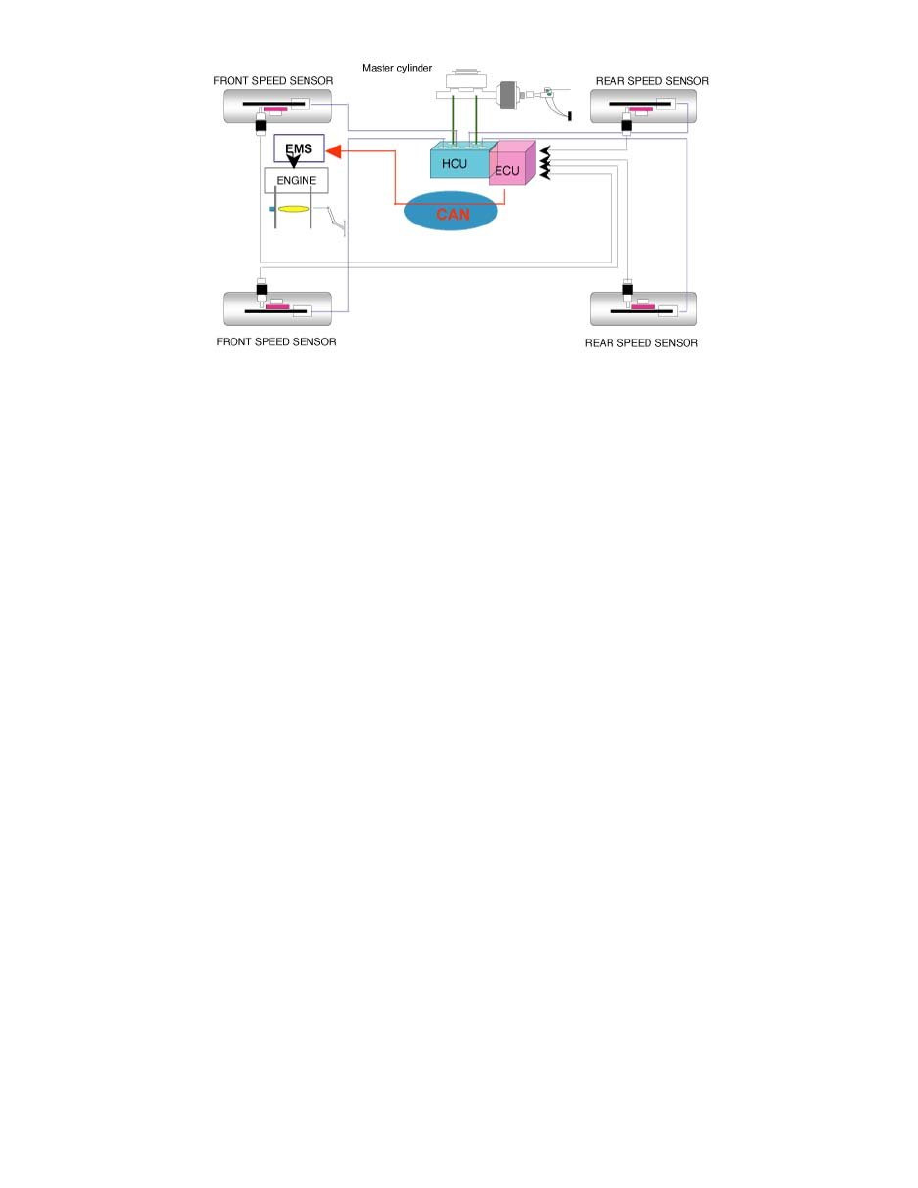Spectra5 L4-2.0L (2005)

TCS (TRACTION CONTROL SYSTEM) CONTROL
TRACTION CONTROL SYSTEM (TCS) FUNCTION
1. Main performance
A. Traction: Lower vibration and higher launchability, acceleration and climbability by slip control.
B. Cornering and passing: Stable cornering and passing.
C. Steering stability: Control traction force traverse vector prior to provide easy turning when turning the steering wheel.
2. General TCS features
A. Improved driveablity. Minor operation of acceleration is not necessary in launching and acceleration on slippery road.
B. More stable cornering by stable acceleration on normal road condition.
C. TCS system will compare vehicle speed received from rear wheel speed sensor and driving wheel speed from front wheel speed sensor on
slippery road condition, and provide optimum slipping rate of driving wheels.
FULL TRACTION CONTROL SYSTEM (FTCS)
1. The TCS control module (HECU) controls TCS control. It includes ABS control module.
2. HECU will compare signals from front (driving) and rear wheel speed sensors to detect driving wheels slip.
3. Upon detecting driving wheels slip, HECU will perform TCS control. The TCS control will include brake TCS (BTCS) control.
4. HECU will transmit engine torque reduction request, fuel cut cylinder number, and TCS control request signals in accordance with slip level to
engine ECM and TCM through BUS line which will provide CAN communication for TCS control.
5. Engine ECM will perform fuel cut as requested by HECU and retard ignition timing as per engine torque reduction request signal.
6. TCM will hold shift position by TCS control time according to TCS operation signal. Then enhanced acceleration by kick-down will not occur.
